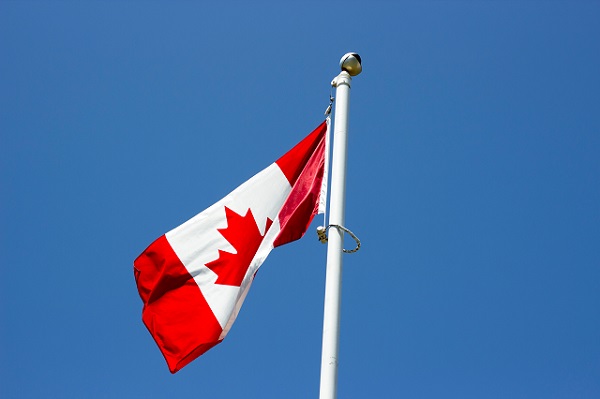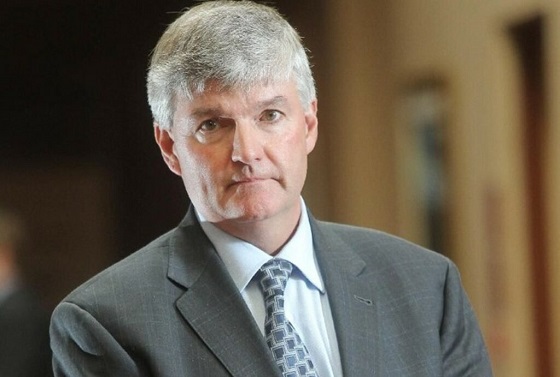Frontier Centre for Public Policy
Trudeau ‘finished what his father started’ driving Canada into failing freefall
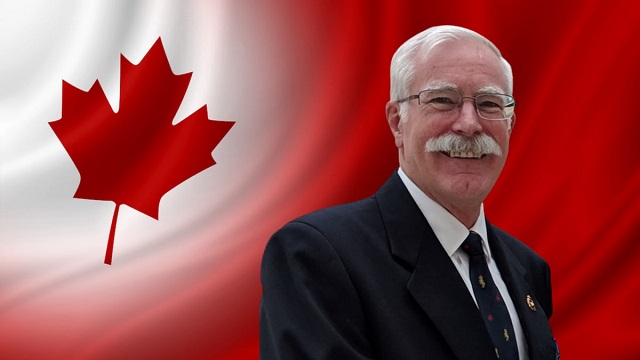
From the Frontier Centre for Public Policy
In 2015 Prime Minister Justin Trudeau scorned Canada — a country that afforded him so much, yet to which he had contributed nothing of notable significance. His disdain for those on whose backs Canada was built was clear. History and European national origins had to be blotted out.
Canada was a “post-national” nation with “no core identity,” he arrogantly told the New York Times. The reckless socialist ideology he spat out was an omen of the division, fear and attack on so-called privileged (white) Canadians that hit like a storm. It hovers over us like a choking toxic cloud.
If Trudeau’s vision was a Canada “completely splintered,” with Quebec a nation unto itself “separate and distinct,” English-speaking provinces “fractured into oblivion” and breaking up our “common culture” — then mission accomplished.
“He’s finished what his father started,” said Lt. Col. Dave Redman (ret’d), who served 27 years with the Canadian Armed Forces and headed Alberta’s Emergency Management Agency.
The Trudeau concept of a post-national state is “dangerous and misleading.”
“It implies that democratically elected national governments are no longer relevant.”
Redman explained Canada’s “shifting socio-political landscape” with powerful clarity in Canada 2024: A Confident Resilient Nation or a Fearful Fracture Country? in the Frontier Centre for Public Policy.
Canadians know something has gone terribly wrong beyond mounting financial struggles and trampled rights. Our nation’s rife with “apologies and internal divisions,” said Redman.
“Confidence has been turned into fear and shame. Canada has become irrelevant on the world stage.”
Canada’s in a “failing” freefall.
“Why will no one invest economically in Canada? Why are people leaving Canada? Why are people not believing that Canada has a future? Why are our allies ignoring us and holding us in disdain? Because we are a threat to their national security because China can get to them through us.”
Canada’s at a “critical juncture.” Until politicians and Canadians unite with common values and defended borders —necessary for a successful nation — Canada will be “stumbling from one crisis to another.”
Until Canadians hold them to account, politicians will fixate on minor “wedge” issues — such as diversity, equity and inclusion (DEI) — to divert attention from critical national concerns they want us to ignore.
Convincing people to feel bad about themselves makes it easier to manipulate guilt and usher in destructive, ideological programs with obscene price tags.
Canada must foster national pride, prioritize national interests and protect national security to secure its future, said Redman.
“A nation is successful when a group of people live in one country with defended borders and share common values, even if they vary in cultures and languages.”
Redman’s six-point framework for national interests includes unity, national security, good governance, protection of rights and freedoms, economic prosperity and growth and personal and community well-being. He offers strategies on how to achieve these critical objectives.
“I believe the current sitting government truly does believe that the World Economic Forum’s concepts and ideals of post-national states is what Canada should be and they have started it.”
“I believe the current government of Canada is intentionally walking each of those six national interests away from Canada in a way that will allow Canada to become part of a broken world.”
It’s up to Canadians to decide what direction we head in.
“The reason I wrote this paper was to make people think about our country in a 20-to-25-year vision. And not let the current government which loves to use divisive, tactical issues to destroy the larger picture conversation. And in doing so, destroy our economy, destroy our unity, destroy our national security by focussing on tactical issues,” said Redman.
A vision for Canada involves citizens who are optimistic about the future, have self-respect to follow through on their ideas, and courage to stand up for their culture and ideals, he said.
Trudeau and his band of self-serving renegades unleashed an ideological curse on Canada.
But we let them.
Then COVID-19 demonstrated how quickly rights and freedoms “can be trampled on, eviscerated and dismissed.”
For a glorious moment in time Freedom Convoy truckers rejuvenated Canadian pride, united Canadians and emboldened us to fight for freedom. Peaceful protesters who waved the Canadian flag were punished.
Yet the silence is deafening as people who despise Canada’s core identity — yes, Trudeau, we have one — hijack our nation and our children’s future.
Redman points to “diaspora marching routinely in the streets of our cities supporting illegal terrorist organizations demanding the death of both citizens here and abroad.”
They wave flags but never the Maple Leaf. They support other countries “but do not march for Canada.”
“Unity is the core value for a country. A cultural unity is based on common shared ethics, values and beliefs. People wishing to become citizens of a country must understand these principles of belief and join the country because they wish for the same to be the foundation of their daily lives.”
“Many who come to a country, not wishing to join the cultural unity of that country, are enemies, intentional or otherwise, who work to erode or destroy this unity.”
Immigration is part of national security.
“You’re pouring people into our country who do not share our ethics and values. And you’re doing it intentionally. That will destroy unity and while it’s destroying unity it will destroy economic prosperity and growth.”
“Our police and courts take no action or in fact support these illegal acts.”
“Our current federal government, many of our provincial territorial governments and our municipal governments stand silently by, or in some cases support the destruction of our values, laws and national interests.”
Redman said the question is, what do Canadians want Canada to be? Will we stand up and root out infectious ideology? Is it too late?
“My paper is about how to overcome what’s happened. It’s happened, we can’t change that. But it’s how to get politicians and Canadians to change how they think about our country. And to have a process to put in place, a vision for our country and have elected officials explain what they see the vision to be. Canadians can make a choice between visions.”
Citizens, academia, public and private sector organizations, unions, religious and non-religious groups need to get involved to break down national interests into “clear and attainable objectives.”
Politicians must explain what unity and democracy means to them. That’s not happening.
Many Canadians are pinning hopes on Conservative Leader Pierre Poilievre forming the next federal government.
“My line to Poilievre is I understand his tactical four bullet plan you know that inflation’s up, the cost of living’s up, that housing’s bad and people need more money in their pocket.”
“I get it. He’s beating that drum over and over. But we’ve got a year before the election, he needs to start talking about his vision for Canada.”
Canada was once internationally respected, trusted and consulted. Now we are pitied by shocked outsiders witnessing woke ideology and crushed free speech forced upon us.
“We’ve been taught to be ashamed of our history instead of proud of it, or even to learn from it.”
“We have completely shattered democratic institutions. Our election system is in question. Our legislatures are in turmoil, our courts, our schools, our medical system. The mainstream media is completely partisan. Our economy is broken. People can’t meet bills at the end of the month and we’re ignored and shunned by our allies.”
Redman addressed good governance, offering guidelines on how to “strengthen and preserve the democratic way of life in Canada.”
“Good governance to me means defence of democracy, where in other countries it can mean absolute control of a totalitarian government.”
Redman’s suggestions to stop Canada from being completely “shattered” include a 100% immigration policy review; halting funding to universities that are “domestic threats” and removing Marxists professors; establishing a monitored election process; and ending government-funded media.
Agencies that counter external threats must be “equipped to work individually and cooperatively, with each other and our allies.”
Stop foreign aid that counters our interests and national security.
“While Canadians are challenged to put food on the table and to have a house, they watch as the federal government sends hundreds of millions of dollars to international organizations and specific countries that do not share our democratic aims or our national interests.”
There must be “a wall of people hitting” politicians telling them to listen or face defeat.
“In 25 years will Canada be a democracy? Or will it become a country led by an authoritarian government that uses fear and threats to remove imaginary risks from the daily lives of Canadians who have lost their self-respect and courage?”
Look at what eight years did.
First published here.
Linda Slobodian is the Senior Manitoba Columnist for the Western Standard based out of Winnipeg. She has been an investigative columnist for the Calgary Herald, Calgary Sun, Edmonton Sun, and Alberta Report.
Frontier Centre for Public Policy
Budget 2024 as the eve of 1984 in Canada
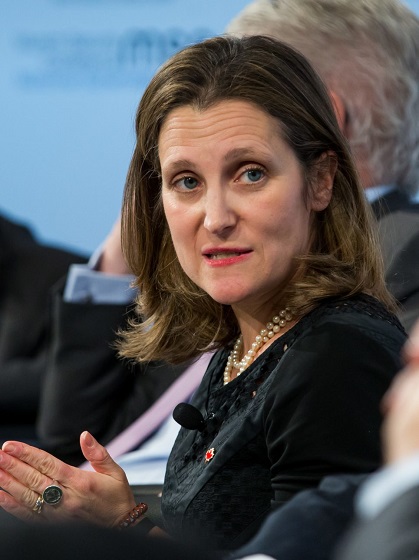
From the Frontier Centre for Public Policy
Those who claim there are unmarked burials have painted themselves into a corner. If there are unmarked burials, there have had to be murders because why else would anyone attempt to conceal the deaths?
The Federal Government released its Budget 2024 last week. In addition to hailing a 181% increase in spending on Indigenous priorities since 2016, “Budget 2024 also proposes to provide $5 million over three years, starting in 2025-26, to Crown-Indigenous Relations and Northern Affairs Canada to establish a program to combat Residential School denialism.” Earlier this spring, the government proclaimed:
The government anticipates the Special Interlocutor’s final report and recommendations in spring 2024. This report will support further action towards addressing the harmful legacy of residential schools through a framework relating to federal laws, regulations, policies, and practices surrounding unmarked graves and burials at former residential schools and associated sites. This will include addressing residential school denialism.
Like “Reconciliation,” the exact definition of what the Federal government means by “residential school denialism” is not clear. In this vague definition, there is, of course, a potential for legislating vindictiveness.
What further action is needed to address “the harmful legacy of residential schools” except to enforce a particular narrative about the schools as being only harmful? Is it denialism to point out that many students, such as Tomson Highway and Len Marchand, had positive experiences at the schools and that their successful careers were, in part, made possible by their time in residential school? If the study of history is subordinated to promoting a particular political narrative, is it still history or has it become venal propaganda?
Since the sensational May 27, 2021, claim that 215 children’s remains had been found in a Kamloops orchard, the Trudeau government has been chasing shibboleths. The Kamloops claim remains unsubstantiated to this day in two glaring ways: no names of children missing from the Kamloops IRS (Indian Residential Schools) have been presented and no human remains have been uncovered. For anyone daring to point out this absence of evidence, their reward is being the target of a witch hunt. As we recently witnessed in Quesnel, B.C., to be labeled as a residential school denialist is to be drummed out of civil society.
If we must accept a particular political narrative of the IRS as the history of the IRS, does our freedom of conscience and speech have any meaning?
To the discredit of the Truth and Reconciliation Commission, fictions of missing and murdered children circulating long before the Commission’s inception were subsumed by the TRC (Truth and Reconciliation Commission). Unmarked graves and burials were incorporated into the TRC’s work as probable evidence of foul play. In the end, the TRC found no evidence of any murders committed by any staff against any students throughout the entirety history of the residential schools. Unmarked graves are explained as formerly marked and lawful graves that had since become lost due to neglect and abandonment. Unmarked burials, if they existed, could be construed as evidence of criminal acts, but such burials associated with the schools have never been proven to exist.
Those who claim there are unmarked burials have painted themselves into a corner. If there are unmarked burials, there have had to be murders because why else would anyone attempt to conceal the deaths? If there are thousands of unmarked burials, there are thousands of children who went missing from residential schools. How could thousands of children go missing from schools without even one parent, one teacher, or one Chief coming forward to complain?
There are, of course, neither any missing children nor unmarked burials and the Special Interlocutor told the Senate Committee on Indigenous People: “The children aren’t missing; they’re buried in the cemeteries. They’re missing because the families were never told where they’re buried.”
Is it denialism to repeat or emphasize what the Special Interlocutor testified before a Senate Committee? Is combating residential school denialism really an exercise in policing wrongthink? Like the beleaguered Winston in Orwell’s 1984, it is impossible to keep up with the state’s continual revision of the past, even the recent past.
For instance, the TRC’s massive report contains a chapter on the “Warm Memories” of the IRS. Drawing attention to those positive recollections is now considered “minimizing the harms of residential schools.”
In 1984, the state sought to preserve itself through historical revision and the enforcement of those revisions. In the Trudeau government’s efforts to enforce a revision of the IRS historical record, the state is not being preserved. How could it be if the IRS is now considered to be a colossal genocide? The intent is to preserve the party in government and if it means sending Canada irretrievably down a memory hole as a genocidaire, so be it.
Michael Melanson is a writer and tradesperson in Winnipeg.
Business
Don’t be fooled by high-speed rail

From the Frontier Centre for Public Policy
Rail advocates admit that trains can’t compete with airliners over long distances or with cars over short distances but claim there is a middle distance – supposedly around 150 to 800 kilometers – in which rail has an advantage over its competitors. That would be true only if the trains were almost 100 percent subsidized.
The Canadian government is considering spending $6 billion to $12 billion to introduce what it calls “high-frequency trains” between Toronto and Quebec City. Though some media reports have described these as high-speed trains (which generally means trains capable of going 250 kilometers per hour), they won’t be. Building such a rail line would easily cost $60 billion and probably much more.
Passenger-train advocates argue that Canada needs to join the international race to have the fastest trains in the world. But this is a race Canada can afford to lose because the country has something that is faster and far less costly: jet airliners.
High-speed trains were already obsolete in 1964, when Japan started operating its first bullet trains. Six years before that, Boeing had introduced the 707 and Douglas the DC-8, both of which cruised four times faster than the early bullet trains and twice as fast as the fastest trains in the world today.
Aside from speed, airliners also have a huge cost advantage because they don’t require a lot of expensive infrastructure between cities. While airports are infrastructure, the only infrastructure airliners really need are paved runways and perhaps a Quonset hut for ticket agents, baggage handling, and a waiting room—which is all that some of Canada’s more remote airports have.
Today’s big-city airports with huge concourses, shops, and jetways were built up over time and mostly paid for out of ticket fees. In contrast, rail advocates want taxpayers to put up tens of billions of dollars before a single wheel turns in the hope that trains that are slower than flying, less convenient than driving, and more expensive than both will somehow attract a significant number of travelers.
Rail advocates admit that trains can’t compete with airliners over long distances or with cars over short distances but claim there is a middle distance – supposedly around 150 to 800 kilometers – in which rail has an advantage over its competitors. That would be true only if the trains were almost 100 percent subsidized.
Air Canada and its competitors currently offer more than three dozen flights a day between Toronto and Montreal with fares starting at $118, less than 25 cents per passenger-kilometer. Fares on VIA Rail Canada averaged 68 cents per passenger-kilometer in 2022, and more than half of its costs are subsidized. People are simply not going to ride high-speed trains in large numbers if those trains cost far more than airlines, buses, or driving.
Amtrak’s only high-speed train, the Acela, collected fares of CN$1.80 per passenger-kilometer in 2022, and while Amtrak claims it covers its operating costs, all of its infrastructure costs are paid for by taxpayers. Amtrak brags that it carries more passengers in the Washington-New York corridor than the airlines, but cars and buses in this corridor carry well over 10 times as many intercity passengers as Amtrak.
The other argument rail advocates make is that high-speed trains will offer shorter downtown-to-downtown times than airlines in some markets. But most people neither work nor live downtown. Toronto and Montreal each have three commercial airports and residents are more likely to be near one of those airports than downtown.
Finally, rail proponents claim that high-speed trains will emit fewer greenhouse gases than cars or planes. But as usual they ignore the construction costs—that is, the billions of kilograms of greenhouse gases that would be emitted to build a high-speed rail line. It is likely that operational savings would never recover this cost, especially since it would be far less expensive to power jets and automobiles with biofuels.
One thing is certain: building high-speed or even high-frequency rail will require lots of workers. Far from being a benefit, Canada is currently suffering a labour shortage that is not expected to end soon. If the government decides to spend billions on a rail line, it will only make the costs of housing, cars, and just about everything else rise even faster.
China, Japan, and Spain have practically wrecked their economies by spending too much on high-speed trains. Just because other countries are foolishly building high-speed rail lines doesn’t mean Canada should do so any more than the country should spend billions on other obsolete technologies such as telegraphs, electric typewriters, or slide rules. Taxpayers should tell the government not to waste money on such boondoggles.
Randal O’Toole is a transportation policy analyst and author of Building 21st Century Transit Systems for Canadian Cities. (20 pages) March 12,2024.
-

 Business2 days ago
Business2 days agoDon’t be fooled by high-speed rail
-

 Alberta2 days ago
Alberta2 days agoActivity-Based Hospital Funding in Alberta: Insights from Quebec and Australia
-

 Business1 day ago
Business1 day agoUN plastics plans are unscientific and unrealistic
-

 Business1 day ago
Business1 day agoTaxpayers criticize Trudeau and Ford for Honda deal
-
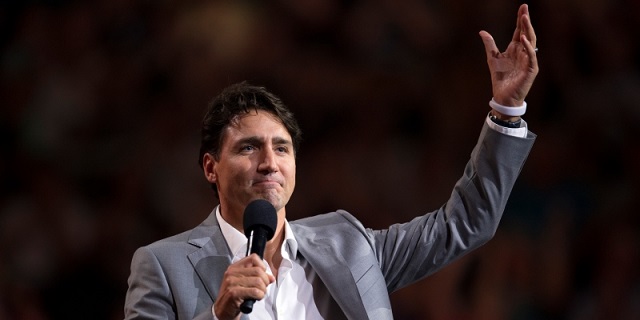
 Fraser Institute2 days ago
Fraser Institute2 days agoCanadians should decide what to do with their money—not politicians and bureaucrats
-

 Addictions1 day ago
Addictions1 day agoBritish Columbia should allow addicts to possess even more drugs, federal report suggests
-
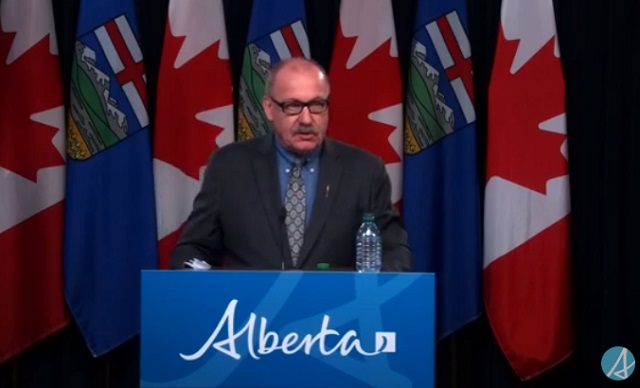
 Alberta1 day ago
Alberta1 day agoPolitical parties will be part of municipal elections in Edmonton and Calgary pilot projects
-
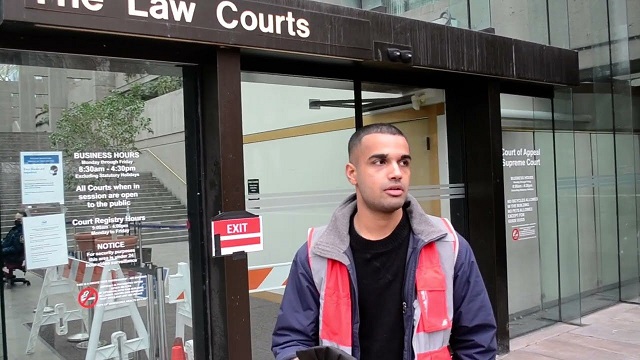
 Bruce Dowbiggin1 day ago
Bruce Dowbiggin1 day agoCome For The Graduate Studies, Stay For The Revolution

